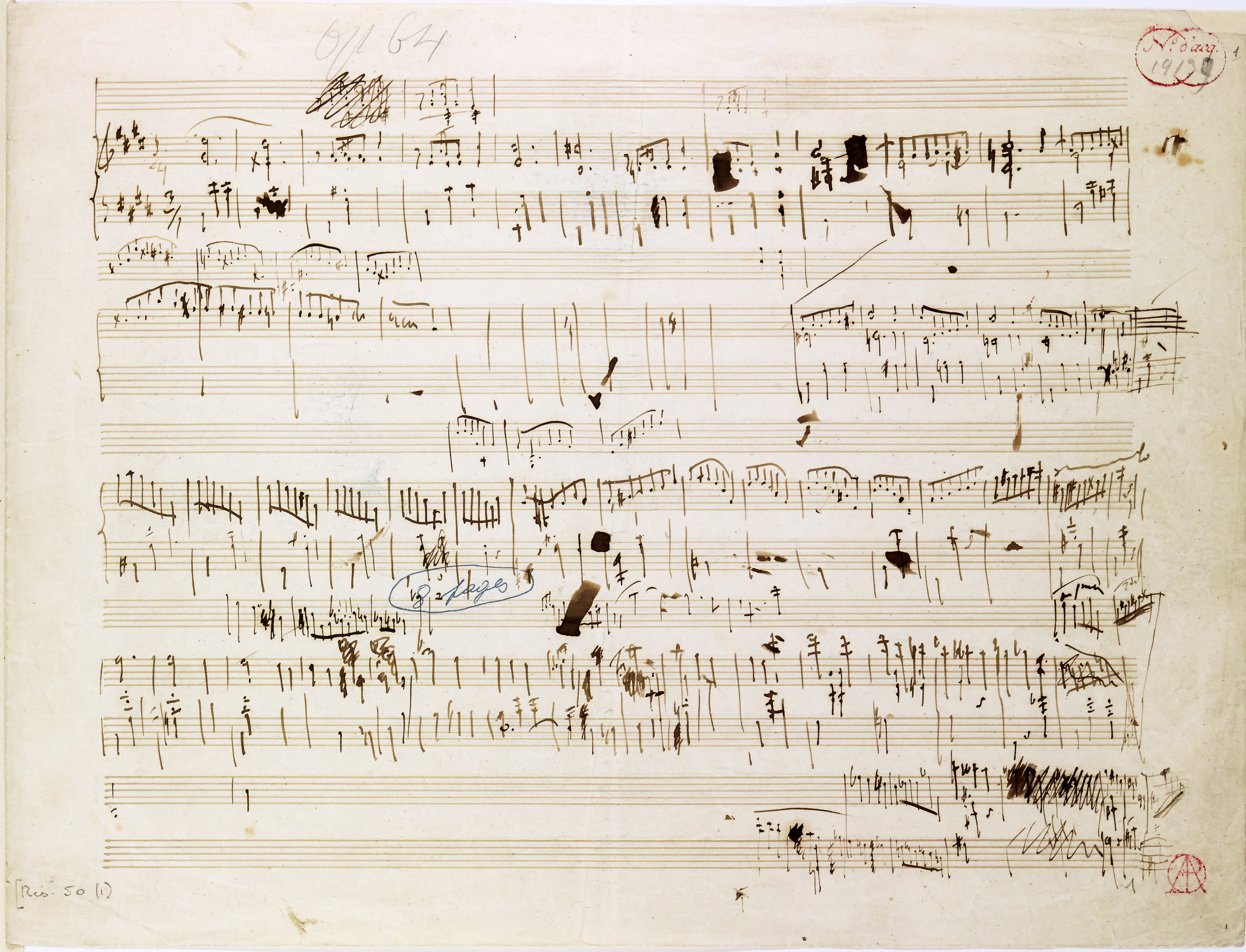



The range of the  hairpin written in A is unclear – the top arm seems to be much longer than the bottom one. The respective sign in FE (→EEC, the majority of GE) perhaps corresponds to the range of the bottom arm of the hairpin of A. In the main text, we suggest an averaged range of the sign, which then leads to the topmost note of the melody; a similar length of the sign is also – as a result of revision – in GE2no2. Alternatively, one can take into account the top arm, written probably first – such a longer hairpin determines the peak of crescendo practically at the beginning of the next bar. The lack of continuation of the sign in bar 13 in EEW results almost certainly from the division into great staves – in this edition bar 13 opens a new line.
hairpin written in A is unclear – the top arm seems to be much longer than the bottom one. The respective sign in FE (→EEC, the majority of GE) perhaps corresponds to the range of the bottom arm of the hairpin of A. In the main text, we suggest an averaged range of the sign, which then leads to the topmost note of the melody; a similar length of the sign is also – as a result of revision – in GE2no2. Alternatively, one can take into account the top arm, written probably first – such a longer hairpin determines the peak of crescendo practically at the beginning of the next bar. The lack of continuation of the sign in bar 13 in EEW results almost certainly from the division into great staves – in this edition bar 13 opens a new line.
Compare the passage in the sources »
category imprint: Graphic ambiguousness; Differences between sources
issues: Inaccuracies in FE, Scope of dynamic hairpins, GE revisions, EE inaccuracies, Inaccuracies in A
notation: Articulation, Accents, Hairpins





